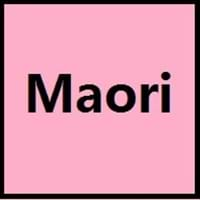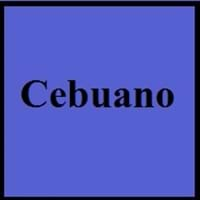Maori and Cebuano
Countries
New Zealand
Philippines
National Language
New Zealand
Philippines
Second Language
Not spoken in any of the countries
Philippines
Speaking Continents
Australia, Oceania
Asia
Minority Language
Not spoken in any of the countries
Not spoken in any of the countries
Regulated By
Māori Language Commission
Visayan Academy of Arts and Letters
Interesting Facts
- "E korao no New Zealand" was the first printed Maori book in 1815.
- The first newspaper in the Maori language was published in year 1842.
- About one-fifth of the population of the philippines speak cebuano and are second largest ethnolinguistic group in the country.
- Cebuano contains many words of Spanish origin.
Similar To
Tahitian Language
Hiligaynon Language
Derived From
Not Available
Island of Cebu
Alphabets in
Maori-Alphabets.jpg#200
Cebuano-Alphabets.jpg#200
Writing Direction
Not Available
Not Available
Thank You
Mauruuru koutou
Salamat
How Are You?
E pēhea ana koe ?
Kumusta man ka?
Good Night
Night pai
Maayong Gabii
Good Evening
pai ahiahi
Maayong Gabii
Good Afternoon
Afternoon pai
Maayong Hapon
Good Morning
Morning pai
Maayong Buntag
Sorry
Aroha mai
Ikasubo ko
I Love You
Aroha ahau ki a koe
Gihigugma ko ikaw
Excuse Me
tukua ahau
Ekskyus mi
Dialect 1
South Island Māori
Boholano
Where They Speak
New Zealand
Bohol
Dialect 2
Western North Island Maori
Southern Kana
Where They Speak
New Zealand
southern Leyte
Dialect 3
Eastern North Island Maori
North Kana
Where They Speak
New Zealand
northern part of Leyte
How Many People Speak?
Not Available
Speaking Population
Not Available
Second Language Speakers
Not Available
Native Name
te Reo Māori
Visayan
Alternative Names
New Zealand Maori
Binisaya, Bisayan, Sebuano, Sugbuanon, Sugbuhanon, Visayan
French Name
maori
cebuano
German Name
Maori-Sprache
Cebuano
Pronunciation
Not Available
Not Available
Ethnicity
Māori people
Cebuano people
Language Family
Austronesian Family
Austronesian Family
Subgroup
Polynesian
Not Available
Branch
Not Available
Not Available
Early Forms
No early forms
No early forms
Standard Forms
Maori
Standard Cebuano
Language Position
Not Available
Signed Forms
Not Available
Not Available
Scope
Individual
Individual
ISO 639 1
mi
No data Available
ISO 639 6
Not Available
Not Available
Glottocode
maor1246
cebu1242
Linguasphere
No data Available
No data Available
Language Type
Living
Living
Language Linguistic Typology
Not Available
Verb-Subject-Object
Language Morphological Typology
Not Available
Not Available
All Maori and Cebuano Dialects
Most languages have dialects where each dialect differ from other dialect with respect to grammar and vocabulary. Here you will get to know all Maori and Cebuano dialects. Various dialects of Maori and Cebuano language differ in their pronunciations and words. Dialects of Maori are spoken in different Maori Speaking Countries whereas Cebuano Dialects are spoken in different Cebuano speaking countries. Also the number of people speaking Maori vs Cebuano Dialects varies from few thousands to many millions. Some of the Maori dialects include: South Island Māori, Western North Island Maori. Cebuano dialects include: Boholano , Southern Kana. Also learn about dialects in South American Languages and North American Languages.
Maori and Cebuano Speaking population
Maori and Cebuano speaking population is one of the factors based on which Maori and Cebuano languages can be compared. The total count of Maori and Cebuano Speaking population in percentage is also given. The percentage of people speaking Maori language is Not Available whereas the percentage of people speaking Cebuano language is 0.32 %. When we compare the speaking population of any two languages we get to know which of two languages is more popular. Find more details about how many people speak Maori and Cebuano on Maori vs Cebuano where you will get native speakers, speaking population in percentage and native names.
Maori and Cebuano Language Codes
Maori and Cebuano language codes are used in those applications where using language names are tedious. Maori and Cebuano Language Codes include all the international language codes, glottocodes and linguasphere.





